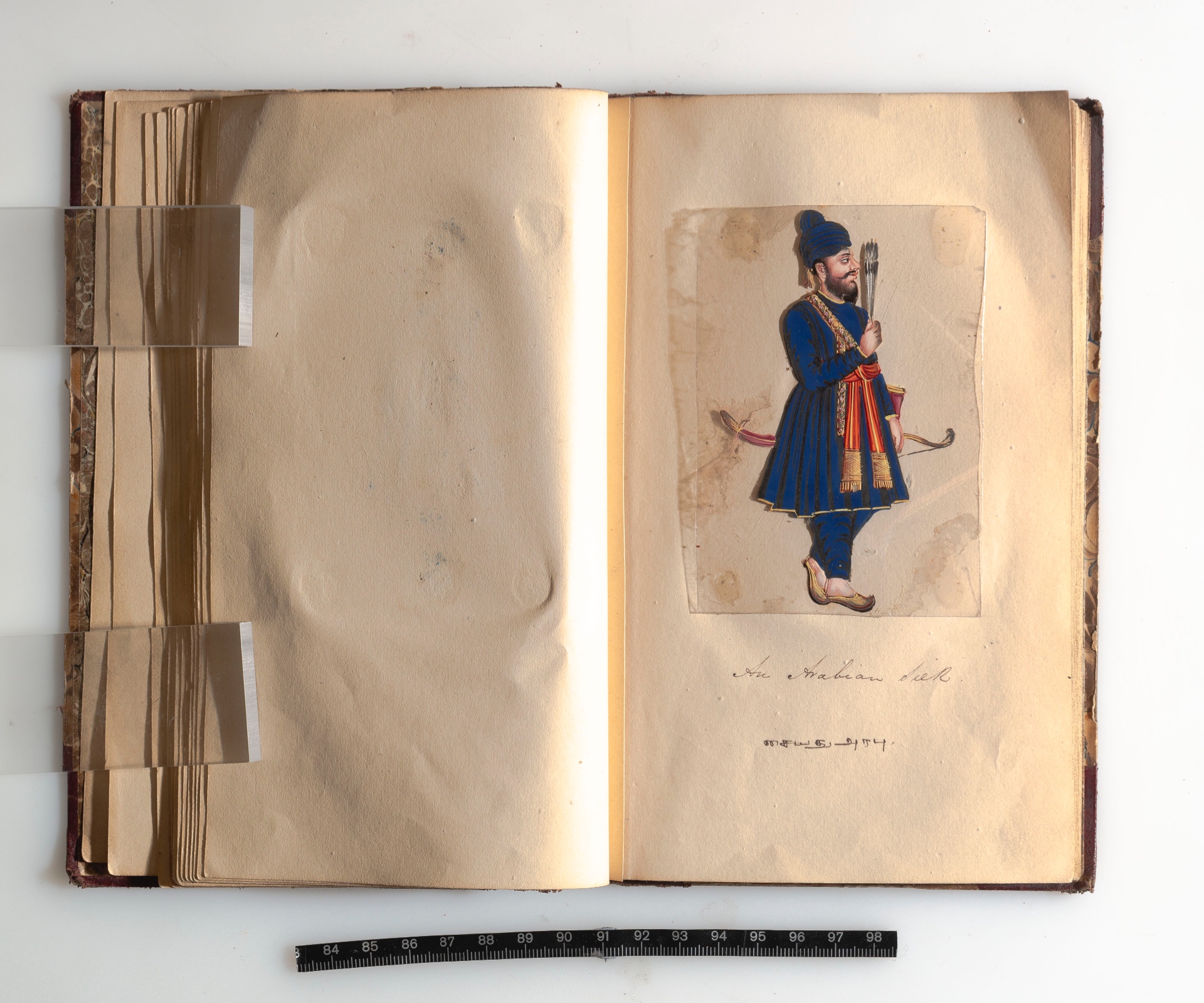Restoration of Album with Indian Miniatures
 Album with miniatures on mica from the collection of the Oriental Department. South India, 2nd half of the 19th century. Paper, cardboard, mica, distemper paints. Album size: 20.3 x 13.7 cm; miniatures: 11.0 х 7.0 cm.
Album with miniatures on mica from the collection of the Oriental Department. South India, 2nd half of the 19th century. Paper, cardboard, mica, distemper paints. Album size: 20.3 x 13.7 cm; miniatures: 11.0 х 7.0 cm.Historical reference
Similar miniatures on mica were created in the 18th – 19th centuries on the territory of India for Europeans who visited the country as part of the East India Company. The Company painting, or kampani kalam, is a vivid phenomenon in the history of Indian art, when Indian masters depicted the local population, representatives of various professions, customs and holidays of the Indians, the flora and fauna of various regions, combining in their artistic language the features of traditional Indian and European painting schools. Miniatures on mica were echoing painting on glass that was popular in Europe at that time. These mica objects are unique since their production stopped in the 19th century.
Many miniatures from the album have deteriorated over time and are in need of restoration.
State of preservation: miniatures are glued at the edges to the album sheets, over time the mica became fragile: in some places it split into thin plates, there are cracks and losses, individual fragments have fallen apart. The paint layer is either detached from the base or in some areas is lost. Album sheets are dusty, deformed, covered with dirt and glue stains. The leather binding and covers with marble paper show heavy abrasions, there is a loss and a slight tear on the binding.
Necessary restoration treatment includes:
- cleaning from dust and dirt
- reinforcing the paint layer
- removing mica plates with painting from album sheets
- removing dust
- gluing cracks and separated fragments together
- filling in losses of the base
- making hinges for miniatures
- removing old glue from album sheets, straightening them
- mounting mica plates back into the album
- retouchings of the abrasions on the binding and covers.
Performing the full scope of conservation measures on these miniature paintings will prevent them from further deterioration, allow to exhibit them and make them available for scholarly research.
Restoration works will be implemented by the specialists of the Laboratory of Scientific Restoration of Oriental Painting.







